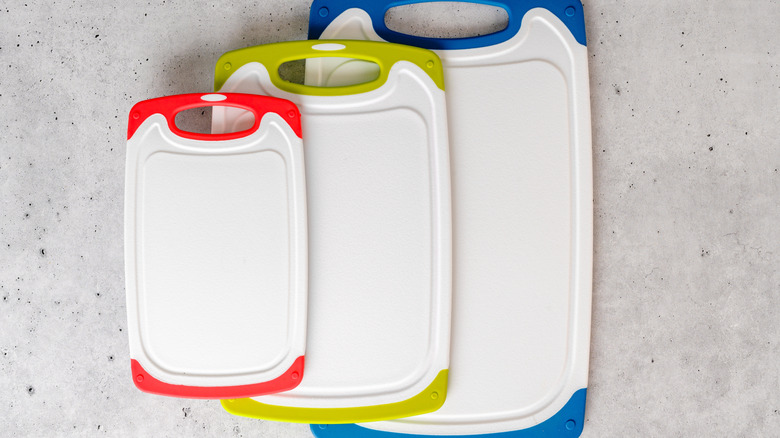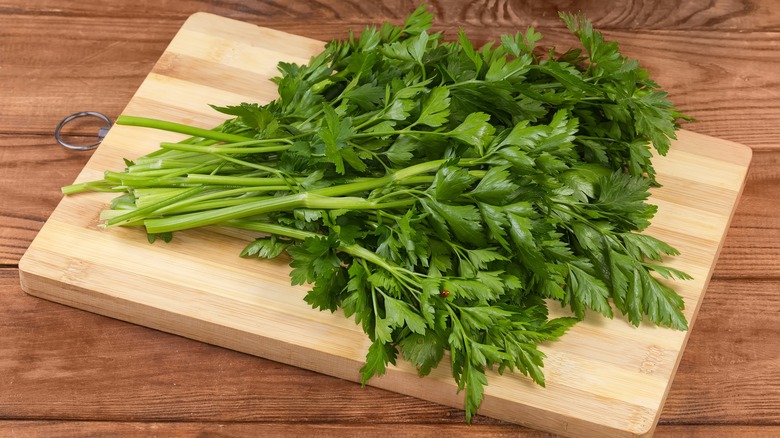Is Your Plastic Cutting Board Making You Sick?
We may receive a commission on purchases made from links.
Microplastics have been a hot topic for years now. Because they seem to contaminate everything we touch, many of us wonder whether we can really avoid eating or drinking microplastics entirely. Turns out, the best we can do is to try and limit the microplastics that enter our bodies when possible, which means reevaluating everything — starting with your plastic cutting board. A 2023 study published in the National Library of Medicine showed plastic cutting boards to be a significant source of microplastics.
Two different types of cutting board materials, polyethylene and polypropylene, are the major culprits. When you cut food on a plastic cutting board, small pieces of the plastic material are dug up by the knife blade which can then stick to whatever food is being prepared. Plastic cutting boards are convenient and generally considered easier to clean than other cutting board materials, but microplastics can invade our stomachs, bloodstream, lungs, and even the placenta to wreak slow havoc on our bodies. If you've been wondering when to throw out your cutting board, now is the time. The impact of these plastics on humans can vary greatly depending on the amount, size, shape, and type of plastic in the body. A study done by the Environmental Health Nanoscience Laboratory at Harvard shows that microplastics can cause oxidative damage, DNA damage, and increase the risk of cancer.
The trouble with microplastics
Microplastic isn't just a buzzword used to make you worry about everything you eat and drink, they can cause real harm to our bodies and the planet. While microplastics appear to be largely unavoidable, corporations using plastic alternatives and reducing plastic manufacturing would help ease the burden. However, reducing the amount of plastic we use in our daily lives is a good start for the rest of us. (Upon throwing out your plastic cutting board, make sure you're not down to just one. It's important to have more than one cutting board to avoid cross-contamination.)
Plastic cutting boards can be replaced with ones made from other materials, like tempered glass. Tempered glass cutting boards don't receive any additional treatments, keeping them free of toxins. It's important to note, however, that glass cutting boards are harder on knives, which means you'll need to sharpen them more frequently. Aside from glass, materials like stone, wood, titanium, or 100% natural rubber are all good alternatives for plastic. Aside from avoiding plastic, try to avoid cutting boards that use glue or fused bamboo. These materials contain a harmful carcinogen known as formaldehyde. There's been a rise in non-toxic cutting boards available in an appeal to a consumer base that's growing more health-conscious.

